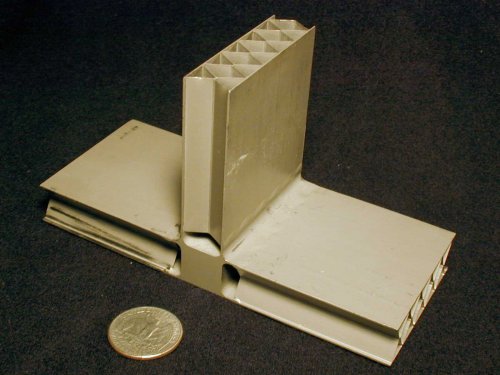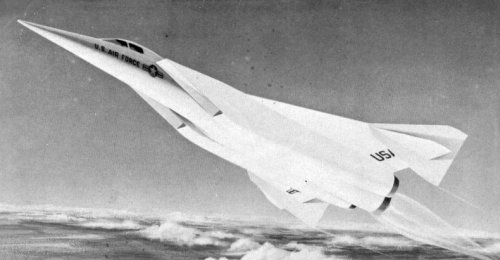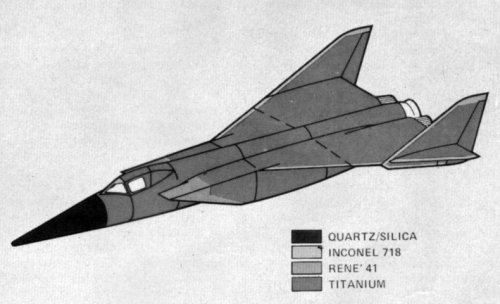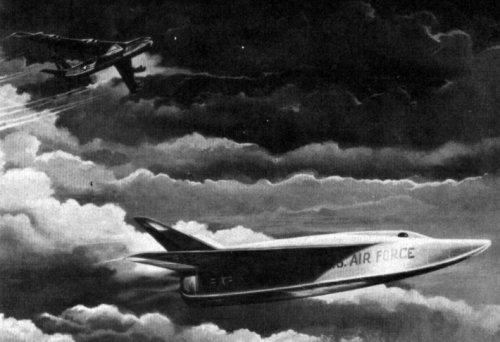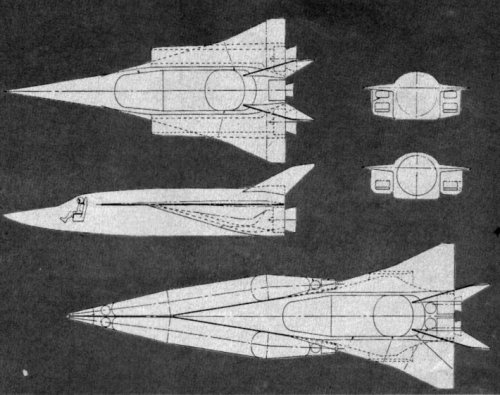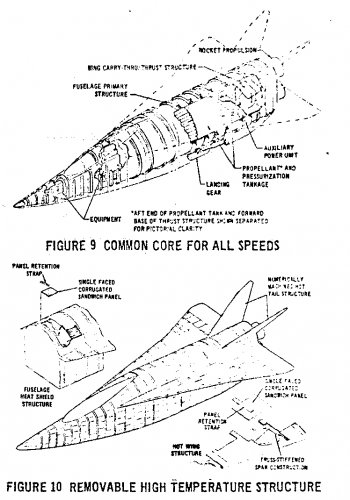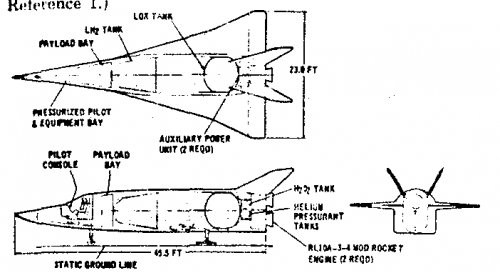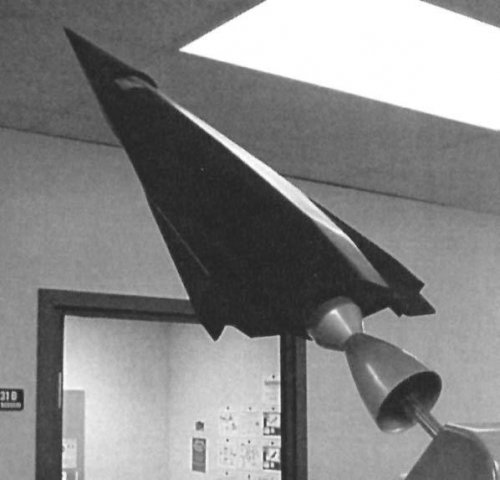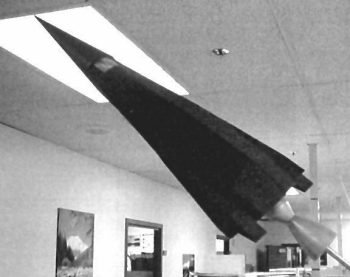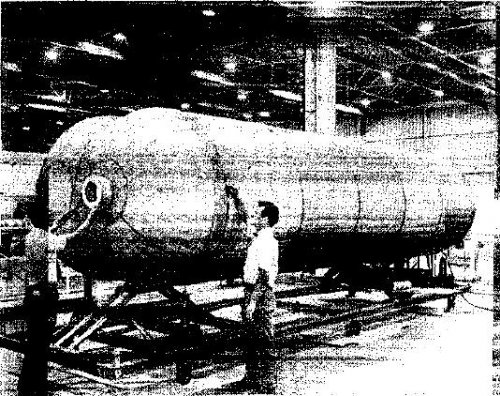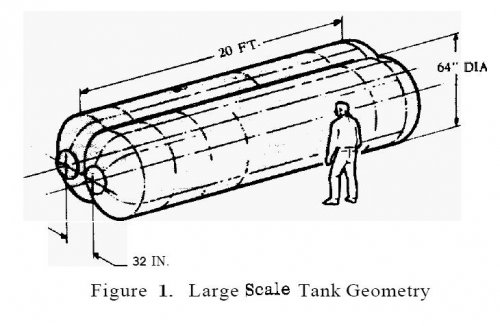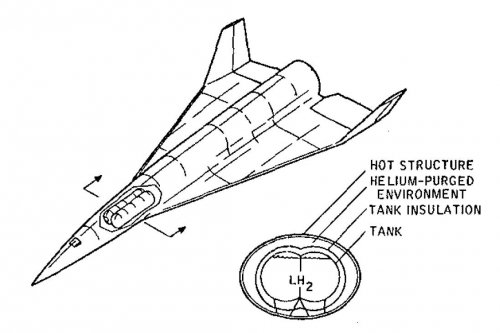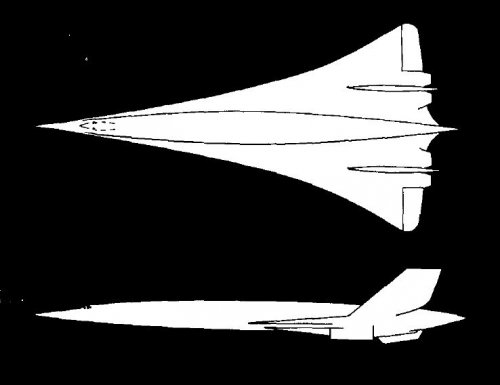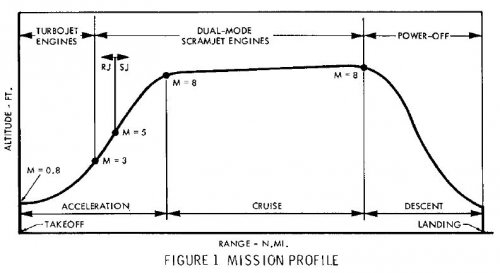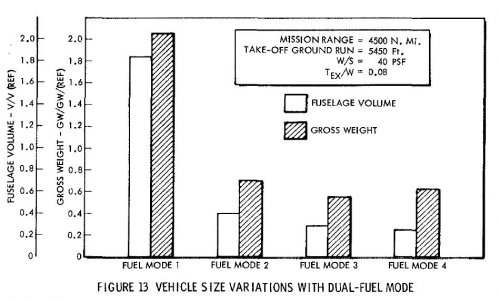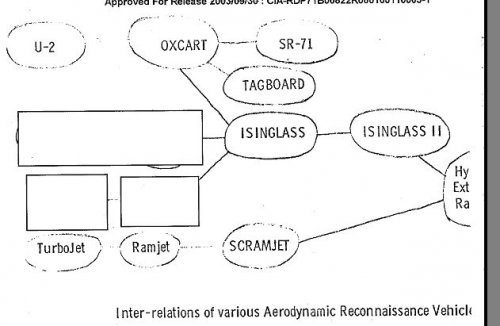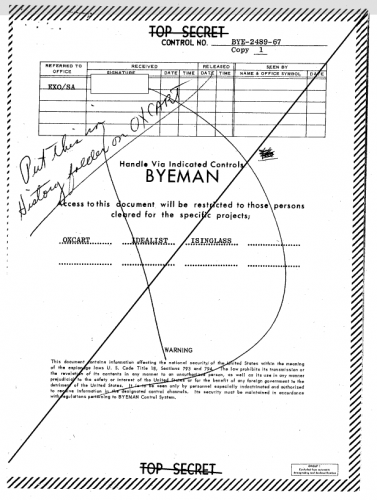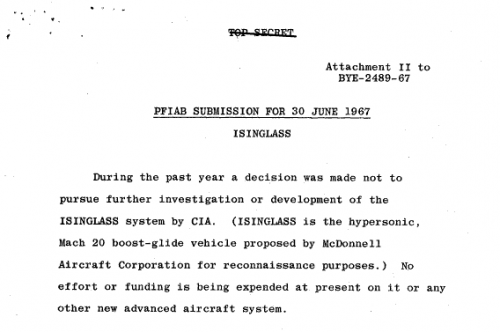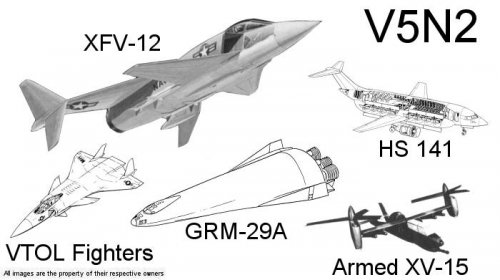- Joined
- 1 April 2006
- Messages
- 11,375
- Reaction score
- 10,209
Anyone anything about this stuff? More than this:
Isinglass: Mach 17, rocket powered, air-launched reconnaissance aircraft? part of RS-129 (Staged combustion hydrogen-oxygen rocket component development program)? wide usage of lightweight structures (diffusion bonded titanium honeycomb)
"CIA air-launched, rocket-powered high speed manned vehicle project of 1965-1968 that developed basic technologies used in later shuttle and reusable launch vehicle programmes.
Isinglass was a the code name for a heavily classified, rocket-powered, air-launched aircraft studied by the Central Intelligence Agency as an A-12/SR-71 successor in 1964-1968. It studied several technologies that would be used in later shuttle and SSTO programmes, including light weight structure and thermal protection system concepts, and diffusion-bonded titanium. A large scale test article was built and tested to prove these features.
The initial Isinglass concept was designed by General Dynamics based on work done on the B-58-launched Super Hustler, Fish, and Kingfish programs of 1958-1960. The new design would use modern avionics and hydraulics systems developed for the F-111 and be capable of air-breathing Mach 4-5 cruise at 30 km altitude. The General Dynamics feasibility study was completed in the fall of 1964. An alternative design completed by McDonnell Aircraft in 1965 was designated Project Rheinberry. This would be a rocket-powered aircraft launched from a B-52 and flying at a near-orbital speed of Mach 20 at 60 km altitude. For the CIA's reconnaissance purposes, neither of these concepts were found to have advantages in comparison to satellites to justify the high development and operating risk and costs. "
"...Office of Special Activities did briefly consider several possible successors to the OXCART during the mid-1960's. The first of these, known as Project ISINGLASS, was prepared by General Dynamics to utilize technology developed for its Convair Divisions earlier FISH proposal and its new F-111 fighter in order to create an aircraft capable of Mach 4-5 at 100,000 feet. General Dynamics completed its feasibility study in the fall of 1964, and OSA took no further action because the proposed aircraft would still be vulnerable to existing Soviet countermeasures. In 1965 a more ambitious design from McDonnell Aircraft came under consideration as Project RHEINBERRY (although some of the work seems to have come under the ISINGLASS designation as well). This proposal featured a rocket-powered aircraft that would be launched from a B-52 mother ship and ultimately reach speeds as high as Mach 20 and altitudes of up to 200,000 feet. Because building this aircraft would have involved tremendous technical challenges and correspondingly high costs, the Agency was not willing to embark on such a program at a time when the main emphasis in overhead reconnaissance had shifted from aircraft to satellites. As a result, when the OXCART program ended in the summer of 1968, no more advanced successor was waiting in the wings-only the veteran U-2."
Isinglass: Mach 17, rocket powered, air-launched reconnaissance aircraft? part of RS-129 (Staged combustion hydrogen-oxygen rocket component development program)? wide usage of lightweight structures (diffusion bonded titanium honeycomb)
"CIA air-launched, rocket-powered high speed manned vehicle project of 1965-1968 that developed basic technologies used in later shuttle and reusable launch vehicle programmes.
Isinglass was a the code name for a heavily classified, rocket-powered, air-launched aircraft studied by the Central Intelligence Agency as an A-12/SR-71 successor in 1964-1968. It studied several technologies that would be used in later shuttle and SSTO programmes, including light weight structure and thermal protection system concepts, and diffusion-bonded titanium. A large scale test article was built and tested to prove these features.
The initial Isinglass concept was designed by General Dynamics based on work done on the B-58-launched Super Hustler, Fish, and Kingfish programs of 1958-1960. The new design would use modern avionics and hydraulics systems developed for the F-111 and be capable of air-breathing Mach 4-5 cruise at 30 km altitude. The General Dynamics feasibility study was completed in the fall of 1964. An alternative design completed by McDonnell Aircraft in 1965 was designated Project Rheinberry. This would be a rocket-powered aircraft launched from a B-52 and flying at a near-orbital speed of Mach 20 at 60 km altitude. For the CIA's reconnaissance purposes, neither of these concepts were found to have advantages in comparison to satellites to justify the high development and operating risk and costs. "
"...Office of Special Activities did briefly consider several possible successors to the OXCART during the mid-1960's. The first of these, known as Project ISINGLASS, was prepared by General Dynamics to utilize technology developed for its Convair Divisions earlier FISH proposal and its new F-111 fighter in order to create an aircraft capable of Mach 4-5 at 100,000 feet. General Dynamics completed its feasibility study in the fall of 1964, and OSA took no further action because the proposed aircraft would still be vulnerable to existing Soviet countermeasures. In 1965 a more ambitious design from McDonnell Aircraft came under consideration as Project RHEINBERRY (although some of the work seems to have come under the ISINGLASS designation as well). This proposal featured a rocket-powered aircraft that would be launched from a B-52 mother ship and ultimately reach speeds as high as Mach 20 and altitudes of up to 200,000 feet. Because building this aircraft would have involved tremendous technical challenges and correspondingly high costs, the Agency was not willing to embark on such a program at a time when the main emphasis in overhead reconnaissance had shifted from aircraft to satellites. As a result, when the OXCART program ended in the summer of 1968, no more advanced successor was waiting in the wings-only the veteran U-2."

